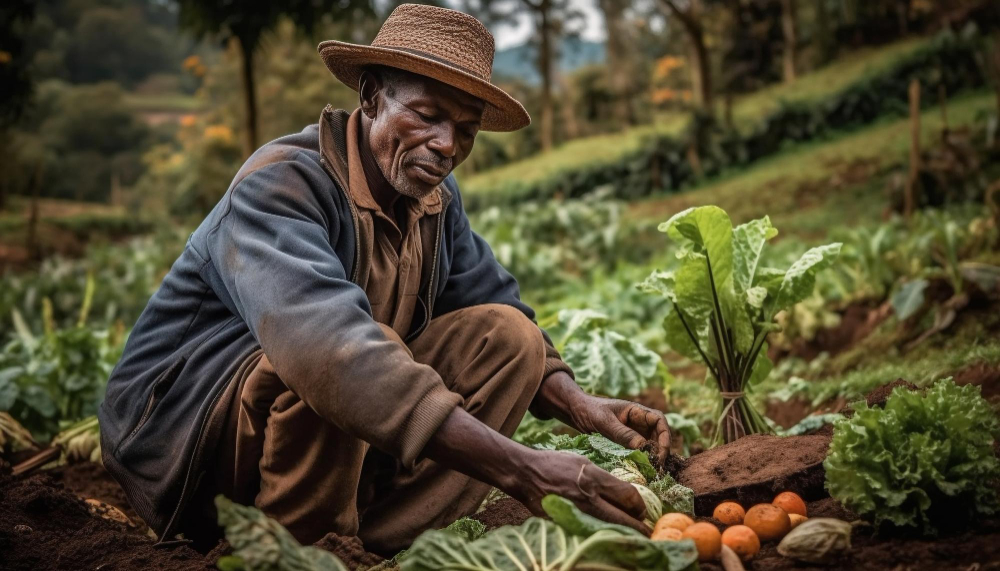Introduction:
Agroforestry is a dynamic and sustainable approach to farming that combines trees with traditional agricultural practices. While it offers many environmental and economic benefits, hearing success stories from fellow farmers can be the most inspiring and convincing testimony. This article will delve into the real-world experiences of farmers who have embraced agroforestry and explore the lessons and insights they have gained.
Orchestrating Biodiversity: The Anderson Family Farm
The Anderson family farm, located in the heart of a Midwest agricultural region, is a testament to the power of agroforestry in enhancing biodiversity. They integrated tree rows among their corn and soybean fields through careful planning and layout design, creating a diverse ecosystem.
The results have been remarkable. Not only have they seen a reduction in pest pressure thanks to the natural predators attracted by the trees, but they’ve also noticed increased pollination, leading to higher crop yields. The Andersons have also introduced beehives near their fruit trees, producing honey as an additional income source. Their story illustrates how agroforestry can create a symphony of life on the farm, fostering biodiversity and ecological balance.
Shade and Savings: The Perez Coffee Plantation
In the mountainous terrain of Central America, the Perez family has been cultivating coffee for generations. Seeking ways to adapt to changing climate conditions, they incorporated shade trees into their coffee plantation. By doing so, they have mitigated the effects of temperature fluctuations and reduced water consumption.
The shade trees provide shelter to the coffee plants and contribute organic matter to the soil, enhancing its fertility. As a result, the Perez family has reduced their reliance on synthetic fertilizers, leading to cost savings. Their experience highlights the adaptability of agroforestry practices to different farming contexts and the financial benefits they can bring.
Nurturing the Land: The Singh Organic Farm
The Singh family, committed to organic farming practices, has embraced agroforestry to enhance soil health and fertility. They interplanted nitrogen-fixing trees and leguminous cover crops alongside their vegetables and grains. Over time, this agroforestry system has improved soil structure and nutrient content.
The Singhs have also tapped into the growing demand for organic tree products. Their farm now produces a variety of tree fruits, nuts, and medicinal herbs, all of which have become additional income sources. By nurturing the land through agroforestry, the Singh family has improved their farm’s environmental sustainability and increased their economic resilience.
Climate Resilience: The Garcia Ranch
Located in a region prone to droughts and wildfires, the Garcia Ranch turned to agroforestry to enhance climate resilience. They established windbreaks and shelterbelts of native trees to protect their livestock and crops from extreme weather events. These trees also serve as a source of fodder during times of scarcity.
The Garcias have seen a significant reduction in soil erosion and wind damage, leading to more stable crop yields. They’ve also noticed reduced stress among their livestock, resulting in improved animal health and productivity. Their story illustrates how agroforestry can serve as a buffer against the challenges posed by climate change.
Diversified Income: The Nguyen Family Orchard
The Nguyen family owns a fruit orchard in a region known for its unpredictable weather patterns. Seeking to diversify their income, they introduced timber trees, which have proven valuable. While waiting for the timber trees to mature, they intercropped annual crops between the fruit trees, utilizing the available space.
The timber trees have increased in value over time, and the Nguyens have been able to sell them for a substantial profit. This income diversification has made their farm more resilient to market fluctuations and weather-related setbacks. Their story showcases the financial advantages of long-term planning and investment in agroforestry.
Conclusion:
These canopy conversations with real-life farmers offer a glimpse into the world of agroforestry and the diverse benefits it can bring. From biodiversity enhancement to cost savings and climate resilience to diversified income streams, agroforestry has the potential to transform farms and livelihoods.
While each farmer’s experience is unique, they all share a common thread: the recognition that agroforestry is not just an agricultural practice but a sustainable and holistic approach to farming that can lead to environmental and economic success. As more farmers worldwide embrace agroforestry, these stories inspire and motivate others to join the movement towards a more sustainable and resilient agricultural future.
